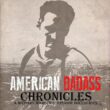A film poster serves as the visual representation of the film and its story. It is often the first point of contact between the film and its potential audience, and a great poster can create excitement and interest in the film. This article will provide seven tips for making a poster that effectively sells your film.
- Use a Compelling Image: An image that captures the essence of your film and is eye-catching is crucial. It should clearly convey the film’s genre, tone, and story. For instance, the poster for the classic thriller “Jaws” features a close-up shot of the shark’s open mouth, immediately establishing the film’s genre and creating suspense.

- Keep it Simple: A poster with too many elements can be overwhelming. Opt for a simple design with a limited color palette and easily readable text. Take, for example, the poster for “The Shawshank Redemption”. The design is minimal, featuring only the film’s title in a sans-serif font against a solid black background, making it easy on the eyes.
- Include Key Information: The poster should feature the film title, the director’s name, and any key cast members. A tagline that summarizes the film’s premise is also a good idea. For example, the poster for “The Godfather” has the film title, director’s name, and tagline (“An offer you can’t refuse”) in a stylized font, against a solid red background.
- Create an Emotional Connection: A great poster should evoke an emotional response from the viewer, so make sure the design and text tap into the heart of the film’s story and themes. For example, the poster for the animated film “Up” features a colorful illustration of a house attached to balloons, evoking a sense of adventure and wonder.

- Utilize Typography Effectively: The font style, size, and placement of text on the poster play a crucial role in creating an impactful design. Consider using unique or contrasting font styles for the film title and tagline. The poster for “Pulp Fiction”, for instance, uses a bold, stylized font for the film title, which immediately draws the viewer’s attention.
- Make it Memorable: Your poster should stand out from the others and be memorable. Consider adding an element of surprise or quirkiness to make it memorable. For example, the poster for “The Grand Budapest Hotel” features an illustrated design with a whimsical color palette, making it instantly recognizable and memorable.

- Test it Out: Before finalizing the design, test it on different audiences to see how they respond. This will provide valuable feedback and help make necessary adjustments. For example, you can survey a group of people and ask them what they think of the poster, what elements they find most appealing, and what could be improved.
In conclusion, a great film poster is a critical tool for selling your film. By following these seven tips, you can create a poster that effectively represents your film, evokes an emotional response, and attracts audiences to it.









